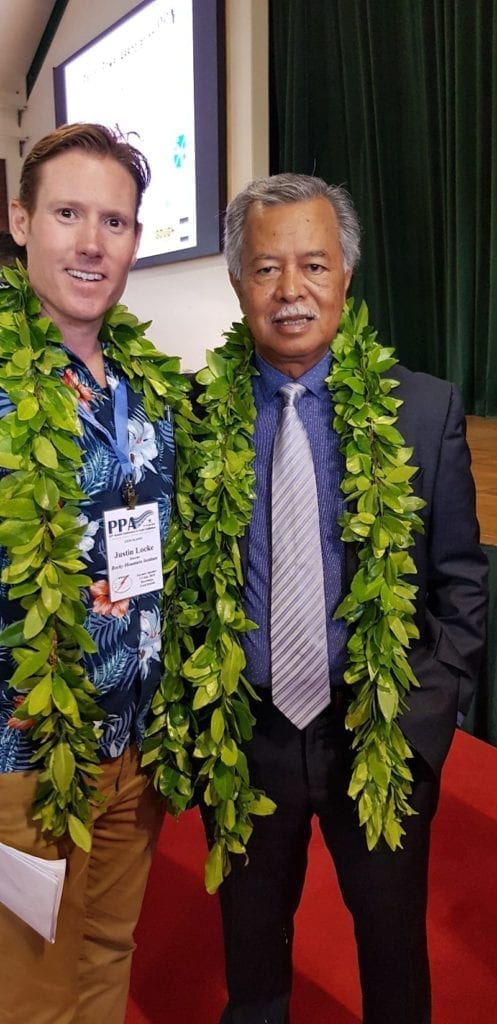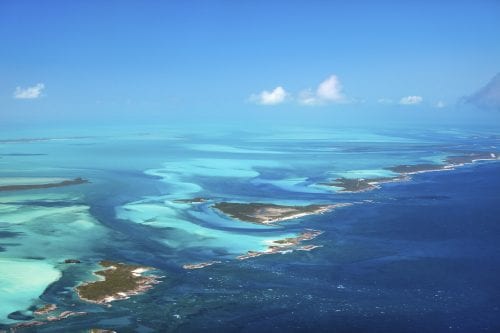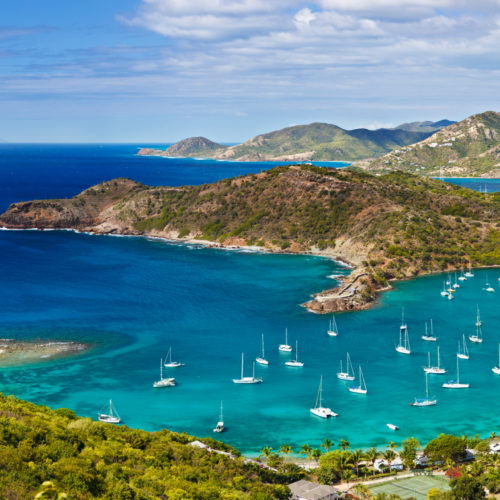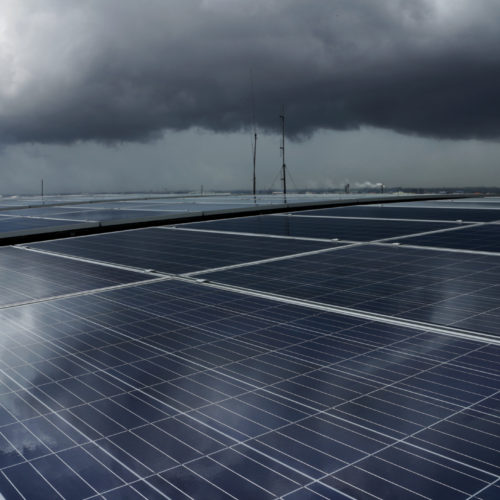This blog post was adapted from a keynote presentation given at the Pacific Power Association Annual Conference and was originally posted on Virgin.com.
I was in Rarotonga, the capital of the Cook Islands in the South Pacific, in 2010, after the island of Aitutaki—just a few kilometers south of Rarotonga, was devastated by Cyclone Pat. Approximately 80 percent of all homes on the island were damaged or destroyed and the local agriculture sector was obliterated.
Unfortunately, events like Cyclone Pat have become the norm in the Cook Islands and the broader Pacific region, being at the epicenter of the climate challenge. Of course, for atoll nations, climate change poses an existential threat—these countries, and many others in both the Caribbean region and Indian Ocean, are confronted with the fact that their way of life is in danger and their future will look very different than it does today.
While many international organizations address this challenge through adaptation—building sea walls, breakwaters, and building flood protection infrastructure, etc.—I have come to realize that the majority of islands and coastal communities will never be able to build their way out of the problem. For the global community to survive, we must address the root of the problem.
And while many industrialized countries are trying to do this alone, in order to be successful in combating a crisis as big and complex as the climate challenge, island nations must work together.

Islands at Ground Zero for the Energy Transition
The good news is that many islands across the globe have made significant progress in their energy transition. In the process, they are developing a scalable blueprint for what an energy transition looks like from a technical, economic, financial, and regulatory perspective while demonstrating the enabling business models and regulatory frameworks required to scale. As a result, island nations now find themselves at ground zero for the global energy transition.
Rocky Mountain Institute (RMI) has worked with more than 15 countries in the Caribbean to accelerate and guide their energy transition. Countries participating in RMI’s Islands Energy Program go through a deliberate, concerted process tailored to the local context. This has led to replicable success across over half a dozen countries—taking six countries from less than 1 percent renewable energy penetration to double digit penetration over the last three years and bringing 12 projects to market for competitive tender leveraging over $200 million in clean energy investment. Our successes include:
- Montserrat—We redesigned the energy matrix to be fully renewable in order to lower the cost of electricity and encourage repopulation of the island after a devastating volcano destroyed almost the entire country over a decade ago.
- Bermuda—We are working with the department of public transportation and the utility to convert the entire public transportation system to electric vehicles —making Bermuda the deepest EV penetration country in the world.
- Saint Lucia—We bridged the divide between a privately owned utility and the government to collaborate effectively and chart out a joint vision for the island’s energy transition, resulting in the first utility-scale solar photovoltaic project.
- Saint Vincent and the Grenadines—We are working to provide a modern, more reliable and cheaper energy supply to isolated communities in the Grenadine islets through high renewable penetration microgrids.
- Barbuda—We redesigned the electricity system, which was nearly 100 percent destroyed after two category 5 hurricanes, to a cleaner, cheaper, and more resilient renewable-based system. Barbuda is constructing their new system now, which will be nearly 100 percent renewable.
The Key Ingredients for the Energy Transition
We have learned through addressing these challenges that there are three key ingredients required to transition an economy: Develop a plan, take action, and collaborate.
It is critical that stakeholders (government, utilities, regulators, and the public) align around a core vision and jointly develop a plan in an inclusive manner to achieve that vision. This plan should be based on a strong understanding of the technical parameters of the electrical grid as well as the underlying economics of the electricity sector. It should chart the least-cost pathway that leads to a transition, and most importantly it must have buy-in from all stakeholders.
Whether it’s a big step or a baby step, stakeholders must take the actions required to move the energy transition process forward. This takes leadership at multiple levels. Most importantly, the utility must drive the process. This often means utility companies need to step out of their comfort zone. Utilities may be afraid of change—they do what they know, and they do it well. But with new technologies reaching the market at much more affordable price points than traditional fossil fuel generation, we are seeing utilities and governments make important strides. For example, more and more island utilities are testing and deploying utility-scale battery storage, a game changer for the island energy transition as it provides readily deployable power supply that enables intermittent renewables to deliver sustained and reliable power.
Lastly, and most importantly, it is critical to collaborate. No one utility, government, or country can facilitate an energy transition alone, and most islands do not have the capital to make a mistake. We only get one chance at this—so we must learn from others. It requires collaboration between stakeholders, outside knowledge providers, and most importantly other islands going through the same journey. The energy transition flourishes in a collaborative learning environment. RMI has helped build that through the Caribbean renewable energy community of practice, and now utility engineers, government policymakers, and regulatory staff across island regions all learn from one another and tackle enormous challenges together.
The world is watching, as the insights gleaned from the islands today will ultimately shape how to scale the energy transition globally tomorrow. Now is the time to seize the opportunity. At a time when the world is retreating within its borders, islands have no other choice but to take this journey and attack this enormous challenge together, as an island community.


